Why Does my Dog Fart So Much? Seek Relief with a Balanced Diet
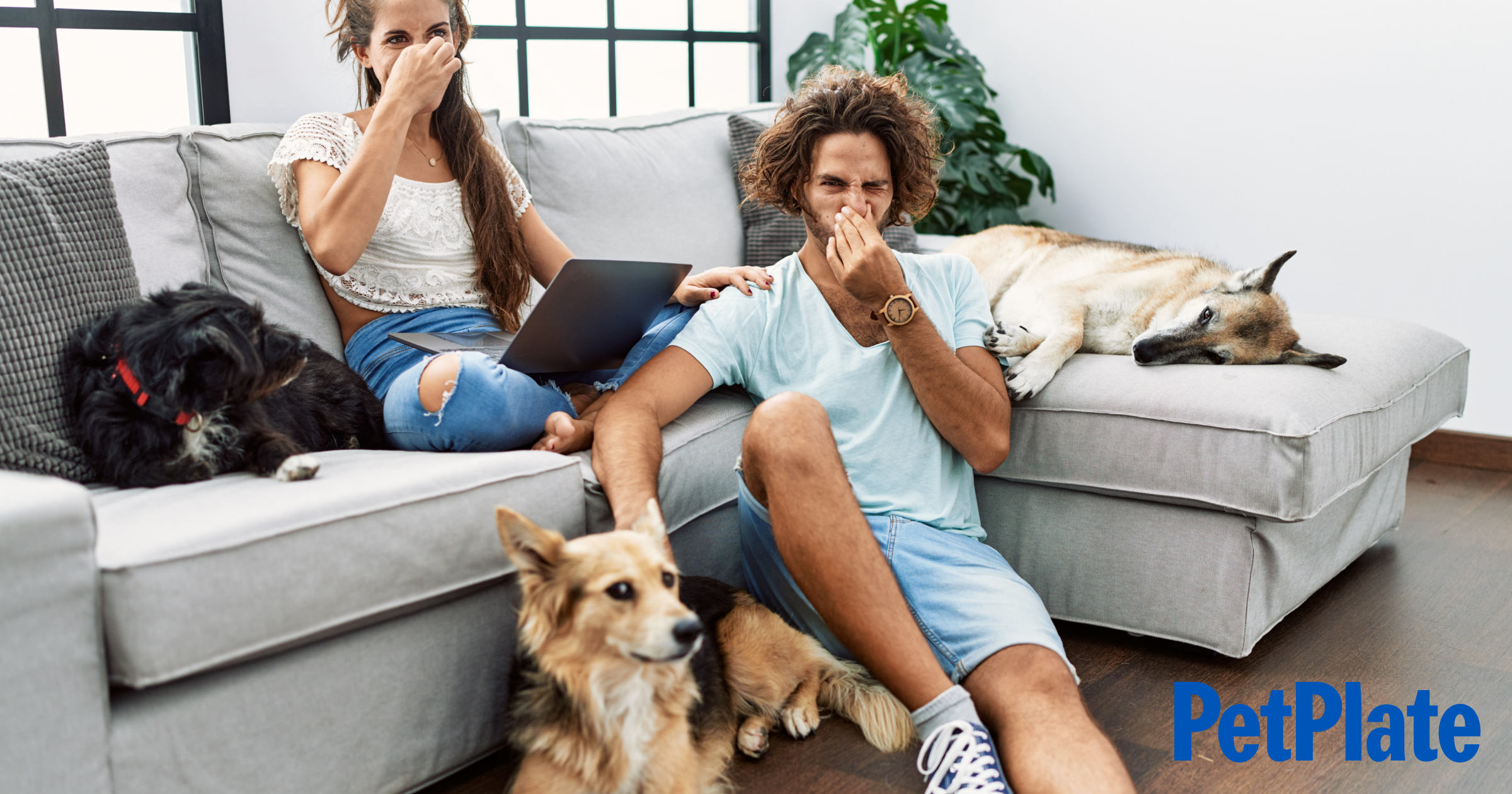
Few things can clear a room faster than a dog fart. One minute you’re enjoying some cuddles with your pup, and the next, your dog toots and you’re running from the smell.
A little gas from your dog might be unpleasant (for both of you), but it’s nothing to worry about. However, if your dog has excessive or sudden gas, it could indicate a problem. We’ll cover what causes this, potential solutions, and when it’s time to talk to your vet.
- What Causes Gas in Dogs?
- What Can You Give a Dog for Gas?
- Dietary Recommendations for Gassy Dogs
- When to See Your Vet if Your Dog Has Bad Gas
Why Does My Dog Fart So Much?

“Why does my dog fart all the time?” is a common question among dog parents. Passing gas is as natural for dogs as it is for humans. Gas builds up in the digestive system, and the only way to release it is to fart. In general, your dog’s flatulence is just a brief moment of unpleasantness and nothing more.
If your dog farts a lot, they may be eating their food too quickly. There are many reasons dogs eat too fast, from fear of another animal taking their food to simple enthusiasm over a delicious meal. People often refer to eating quickly as “inhaling” the food, and that’s exactly what causes your dog to fart. As they gobble up the food, they’re inhaling a lot more air than they would if they ate slowly. This excess air leads to a buildup of gas that’s released as a fart.
The types of food your dog eats can also affect the frequency and intensity of their flatulence. Both healthy and unhealthy foods can make your dog fart, so gassiness isn’t an automatic sign of a poor diet. For example, if you fed your dog steamed Brussels sprouts, they would likely be gassy afterward because of the high fiber content. This is still a healthy snack to give your dog occasionally.
Most dog farts are normal and harmless; however, a “normal” amount of gas can mean different things for different breeds. If you’re trying to decide if your dog has excessive gas, it’s important to consider their breed.
What Are the Gassiest Dog Breeds?
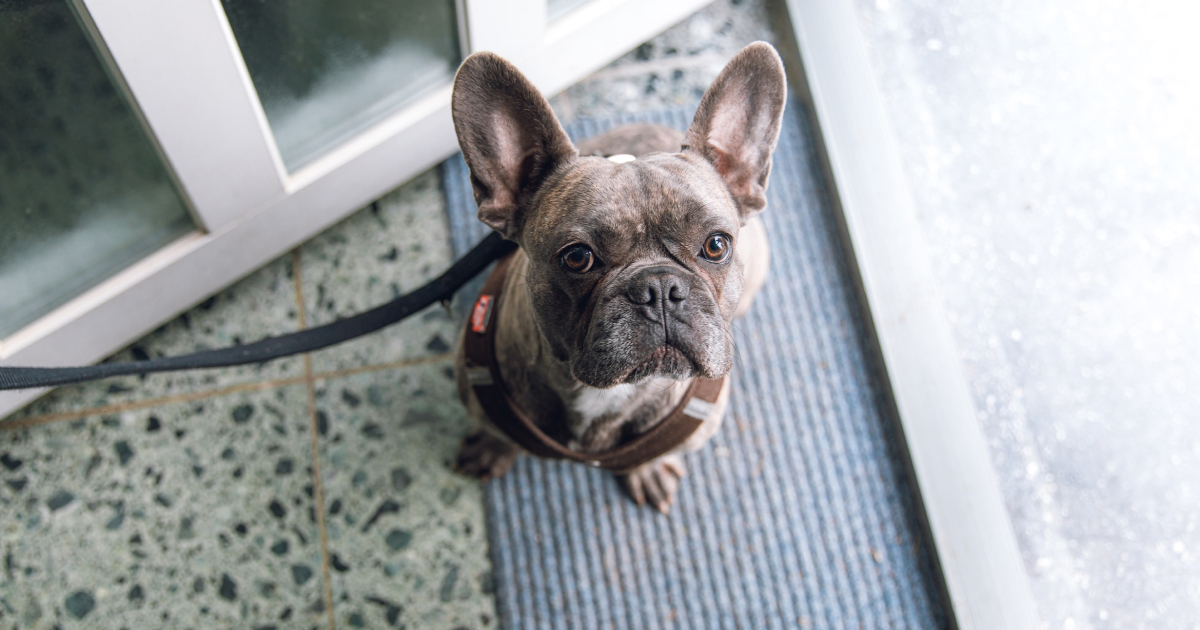
Any dog breed can get gas occasionally, but some dog breeds are persistently gassy. Breeds that commonly have gastrointestinal issues, such as golden retrievers and German shepherds, are quite flatulent. Brachycephalic dogs such as boxers and pugs are also more prone to gas than other breeds. Their short snouts cause them to swallow a lot of air when they eat, which creates a buildup of gas that leads to frequent farts.
There are many ways to reduce gassiness in dogs, but naturally gassy breeds will still fart despite your best efforts. These are some of the gassiest dog breeds:
- Boxers
- English bulldogs
- French bulldogs
- Pugs
- Pitbulls
- Golden retriever
- Rottweiler
- Beagle
- Doberman pinscher
- Yorkshire terriers
- German shepherds
What Causes Sudden Gas in Dogs?
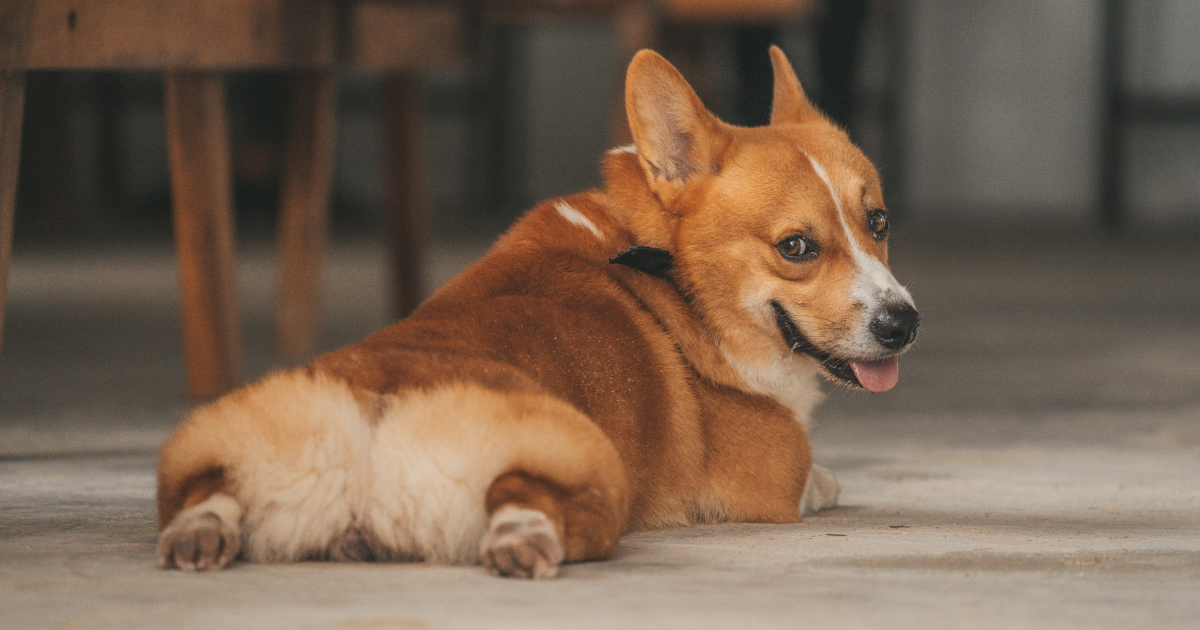
As a devoted pet parent, you’re probably more familiar with your dog’s gassy habits than you’d like to be. However, it’s important to know what’s normal for your dog because it allows you to notice right away if something isn’t right. For instance, if your old dog suddenly has bad gas, it’s time to explore the potential causes.
- Sudden change in diet: Switching from one brand or flavor of dog food to another may seem harmless, but it can have a big impact on your dog’s digestive system. If you’ve made a sudden change to your dog’s diet, this is almost certainly the cause of their increased flatulence.
- Food sensitivities and allergies: If you slowly switch your dog to a new diet and they’re still farting a lot, they may be allergic to one of the ingredients. Common food sensitivities and allergies include wheat, soy, dairy, preservatives, and highly processed ingredients.
- Eating certain foods: Some foods are more difficult for your dog to digest. Common culprits are peas, milk products, fatty table scraps, and cruciferous vegetables such as broccoli and cauliflower. As your dog’s digestive system works harder to digest these foods, it releases more gas than normal.
- Eating low-quality or spoiled food: Many dogs can’t resist getting into the trash. If yours is one of them, it’s possible they found some discarded, spoiled food and immediately gobbled it up. The increase in gas should pass within a day or two. If it lasts longer than that, or your dog shows other symptoms of illness such as vomiting, contact your vet.
- Gastrointestinal issues: Excessive gas could signify a more serious medical condition, like IBS or intestinal parasites. If none of the common causes of gas fit your dog’s situation, check with your vet to get a diagnosis.
Gas Relief: Lifestyle & Dietary Changes
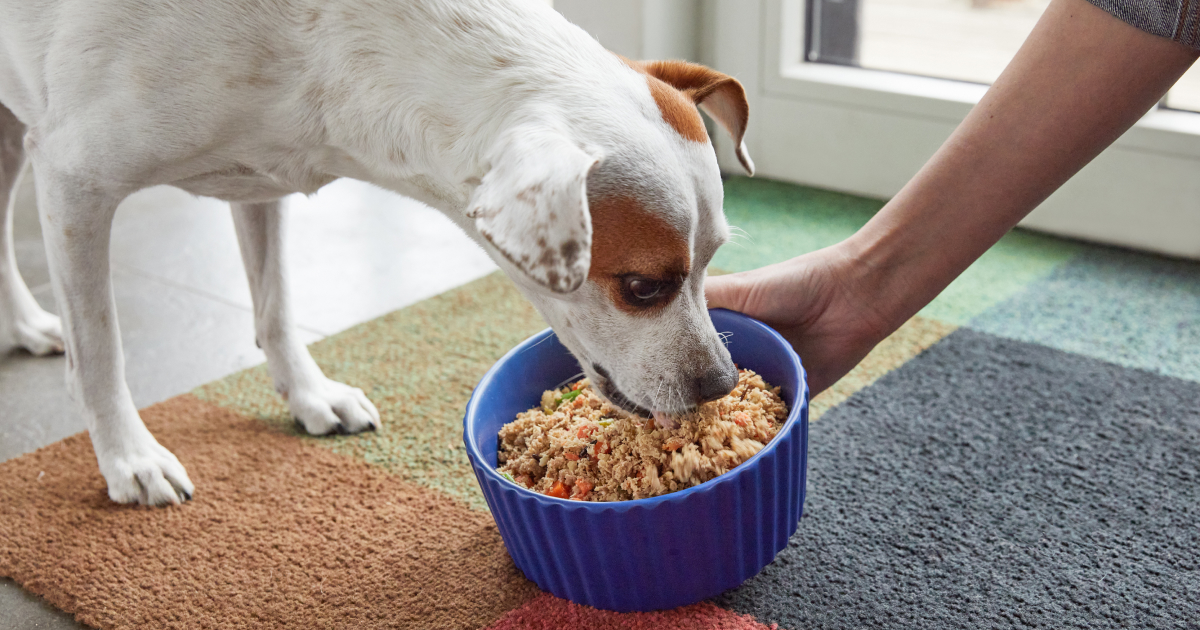
There are several dietary and lifestyle changes you can try to prevent or relieve your dog’s gas.
Encourage them to slow down when they eat.
The method you choose to make your pup eat more slowly will depend on the reason they eat so fast.
- Is your dog too hungry? Make sure you feed them two meals per day instead of one.
- If they are afraid another dog will steal their food, try separating your pets at mealtimes.
- Some dogs are just enthusiastic eaters. To overcome this, serve their food in a muffin tin. This will force your dog to slow down as they move from cup to cup.
Manage their weight.
Dogs that are overweight or out of shape are more prone to gas regardless of their diet. Weight management and regular exercise are key to preventing gas in your dog and improving their health. A high-quality diet, combined with regular walks or other exercise, will keep your dog’s weight within a healthy range and make them less susceptible to flatulence.
Give them a massage.
If your dog is currently suffering from excessive gas, you can relieve their discomfort by massaging the gas out of them. To do this, feel along your dog’s sides and abdomen for spots that seem unusually firm. Using the flat of your palm and light pressure, massage these areas in a circular motion. Be sure not to squeeze or press too hard. A nice, gentle massage should help relieve the discomfort and anxiety your dog is feeling and help them pass the gas more easily.
Feed your dog a high-quality diet.
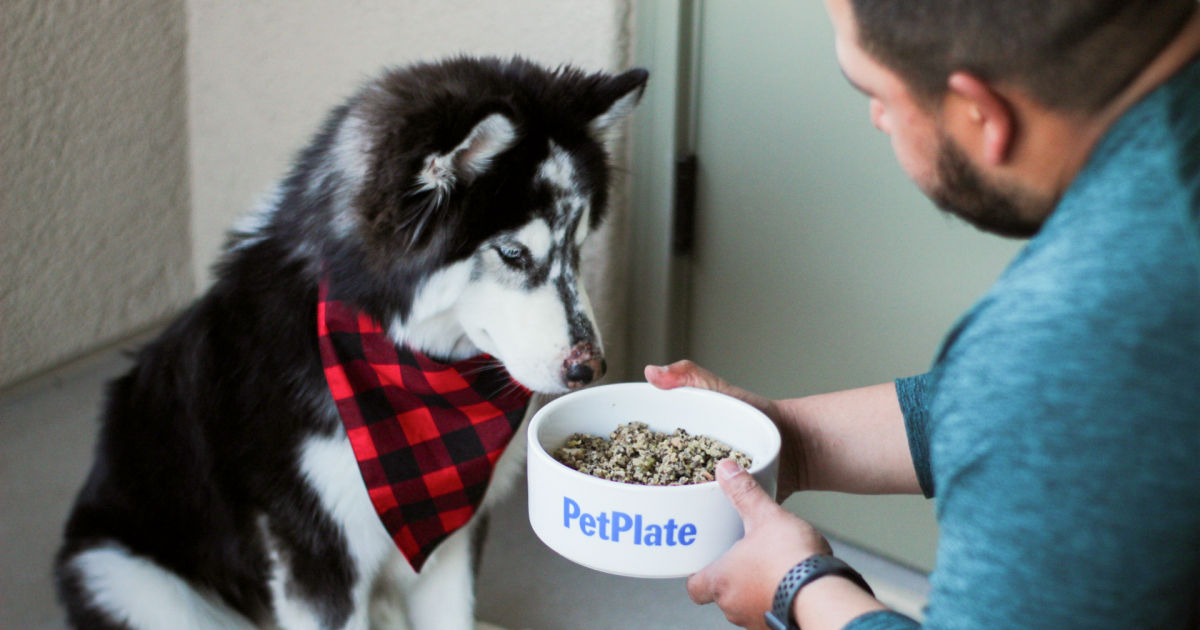
When you consider whether a dog food brand is good for your dog, ask yourself this: Does the ingredient list sound like something you could eat? If yes, it’s probably a good choice for your dog as well. You can also refer to our “What Should You Feed Your Dog?” guide for further information on providing your furry friend with a good diet.
A quality diet for your dog consists of nutrient-rich whole foods such as eggs, grains, meats, some vegetables and fruits, and fish. You should avoid dog foods that are highly processed or those that include heavy preservatives and meat byproducts.
Human-grade dog foods, like those PetPlate provides, have high-quality ingredients that even a human can safely eat. Human-grade food is a great choice for your dog’s health, and you’ll have peace of mind knowing you’re giving them the best chance at a long, happy life.
Introduce a new diet slowly.
A dog’s stomach is very sensitive to dietary changes. If you suspect a low-quality diet is the cause of your dog’s gas, it’s important to transition them to higher quality food slowly. Make the switch over one week by gradually increasing the ratio of new food to old food. By the seventh day, your dog should be ready to enjoy a whole bowl of their new food.
As you make this change, you can monitor how your dog is handling it and slow the transition down if needed. The best way to do this is to look at their poop. Yes, we know, but it really will tell you what you need to know! Learn how to decode your dog’s poop to ensure their stomach is happy with the dietary changes.
What Can You Give a Dog for Gas?

We’ve covered ways you can change your dog’s diet or lifestyle to prevent or reduce gas, but what can you do when they currently have gas? Gassiness can be as uncomfortable for your dog as it is unpleasant for you, so it’s good to know what you can safely give your dog to help with gas. Below are answers to common questions dog owners have about treating their pet’s flatulence.
Can you give your dog Gas-X?
Simethicone, more commonly known as Gas-X, is generally considered safe for dogs. However, you should always consult your vet before giving simethicone for dogs. Your vet can provide accurate dosage recommendations for your dog’s size.
It’s important to note that Gas-X doesn’t cure your dog of gas. It works by speeding up the process of expelling gas while making it easier to pass. In other words, you’ll still have to deal with the farts, but your dog will feel better.
Can you give your dog Tums?
Yes, it is safe to give your dog Tums, but it’s not very effective. Calcium carbonate is the active ingredient in Tums, and it works by reducing the amount of acid in the stomach. This works well for humans, but dogs have a much faster digestive system. The medicine simply doesn’t have enough time in a dog’s stomach to get the job done.
Should you give your dog probiotics?
Probiotics are helpful bacteria that live in the digestive tract. They inhibit the growth of “bad” bacteria and promote healthy digestion, which in turn reduces the amount of gas released as your dog digests food.
One of the best probiotics for gastrointestinal issues in dogs is Lactobacillus. It fends off harmful bacteria that cause stomach problems while also helping your dog better absorb the nutrients in their food.
Probiotics made specifically for dogs are becoming very popular, and they’re a great option for dogs with sensitive stomachs. You can find probiotics in many forms including pills, powders, and flavored chewables. They’re an easy way to help your dog’s digestive system fight gas buildup.
Is yogurt for dog gas a good idea?
Yogurt is sometimes used to soothe gassiness because it contains many probiotics that can improve digestive health. While yogurt can be a good option to treat dog gas, there are some caveats. Many dogs are sensitive to dairy, so giving them yogurt could make their gas worse or even cause diarrhea.
If you’ve given your dog dairy-based treats in the past and they’ve handled them well, then you can certainly use yogurt to reduce their farts. One tablespoon of yogurt is a good dose for a medium or large dog. For a smaller breed, give one to two teaspoons per day.
If you’ve never given your dog any dairy products before, it’s not a good idea to introduce it to them when they’re already experiencing stomach trouble. You can get the gas-reducing benefits of probiotics without the risk of a dairy reaction by choosing a probiotic supplement.
What are other good home remedies for dog gas?
How to relieve gas in dogs naturally? Ginger is a common remedy that humans use for stomach-related issues such as gas, and it can work very well for your pup, too. You can use powdered or raw ginger at a rate of 10-25 mg per pound of body weight. Ginger has a bit of heat to it, so we recommend sprinkling this over your dog’s food rather than feeding it to them directly. You can also find powdered ginger as a supplement capsule. You can give this to your dog as you would any other type of pill.
When to See Your Vet if Your Dog Has Bad Gas
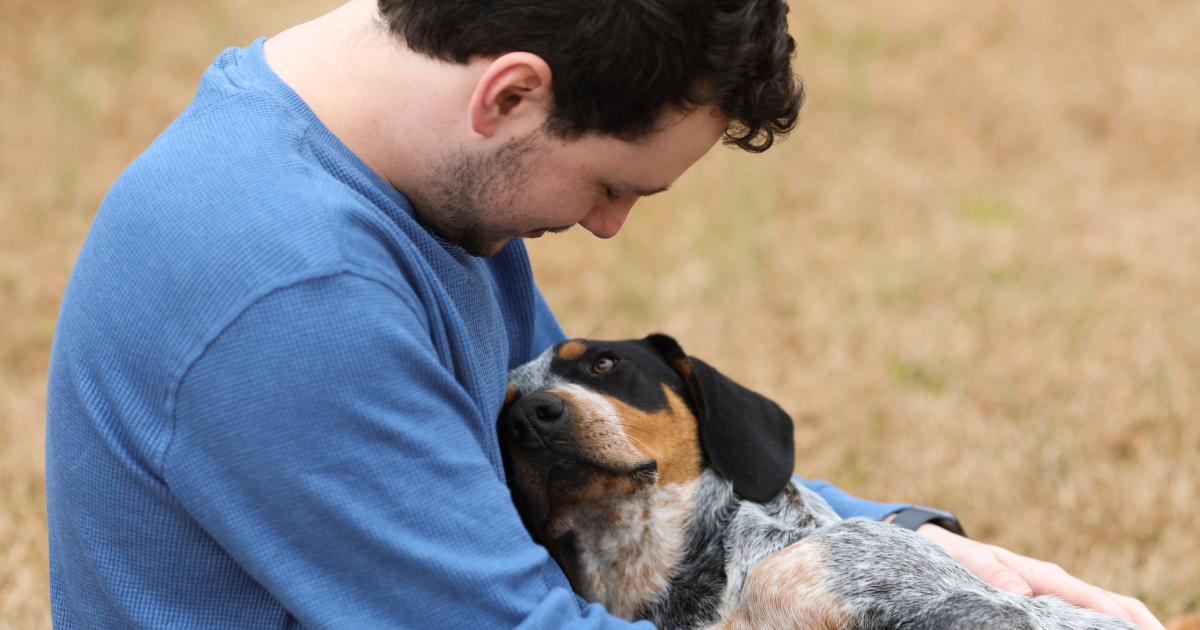
Not all dog farts are normal. If your dog has excessive gas or gas that’s accompanied by pain, diarrhea, or vomiting, it’s time to see your veterinarian. The same goes for if your dog is passing gas but not pooping. These symptoms could indicate a severe illness, and it’s best to have your vet evaluate your dog’s condition.
Bloat
Dogs can experience mild bloating as a side effect of gas, but this is different from actual bloat, or gastric dilatation-volvulus (GDV). GDV is a life-threatening illness that occurs when the stomach fills with gas and twists in on itself. This cuts blood and oxygen off from the rest of the dog’s body and causes their belly to swell.
Some dog breeds are especially prone to bloat, and your vet may suggest dog gastropexy to prevent it from happening. Gastropexy is a surgical procedure that stitches the dog’s stomach to the abdominal wall so that it can’t twist and cause GDV.
A dog suffering from bloat will become anxious, pace, drool excessively, attempt to vomit, and will likely whine if you press gently on their stomach. These symptoms are distinct from those of a gassy dog with a mildly bloated stomach. If your dog is exhibiting signs of bloat, bring them to the vet immediately. There are no home remedies to cure gastric dilation in dogs, and every minute counts with this illness.
Hemorrhagic Gastroenteritis
Hemorrhagic gastroenteritis (HGE), sometimes called Acute hemorrhagic diarrhea syndrome (AHDS), is a disorder that comes on suddenly. It can happen to any dog, even otherwise healthy ones, but it’s especially common with small dog breeds. The exact cause of HGE is unknown, so there are no recommended precautions to take to prevent it.
The main symptoms of HGE are vomiting and bloody diarrhea. Because this disorder affects the digestive tract, symptoms may also include gas. If you see blood in your dog’s stool, contact your vet right away. Treatments for hemorrhagic gastroenteritis include administering fluids and antibiotics. A dog that receives treatment early has a very good chance for recovery.
Dog Food for Gassy Dogs – Easy Healthy Meals with PetPlate
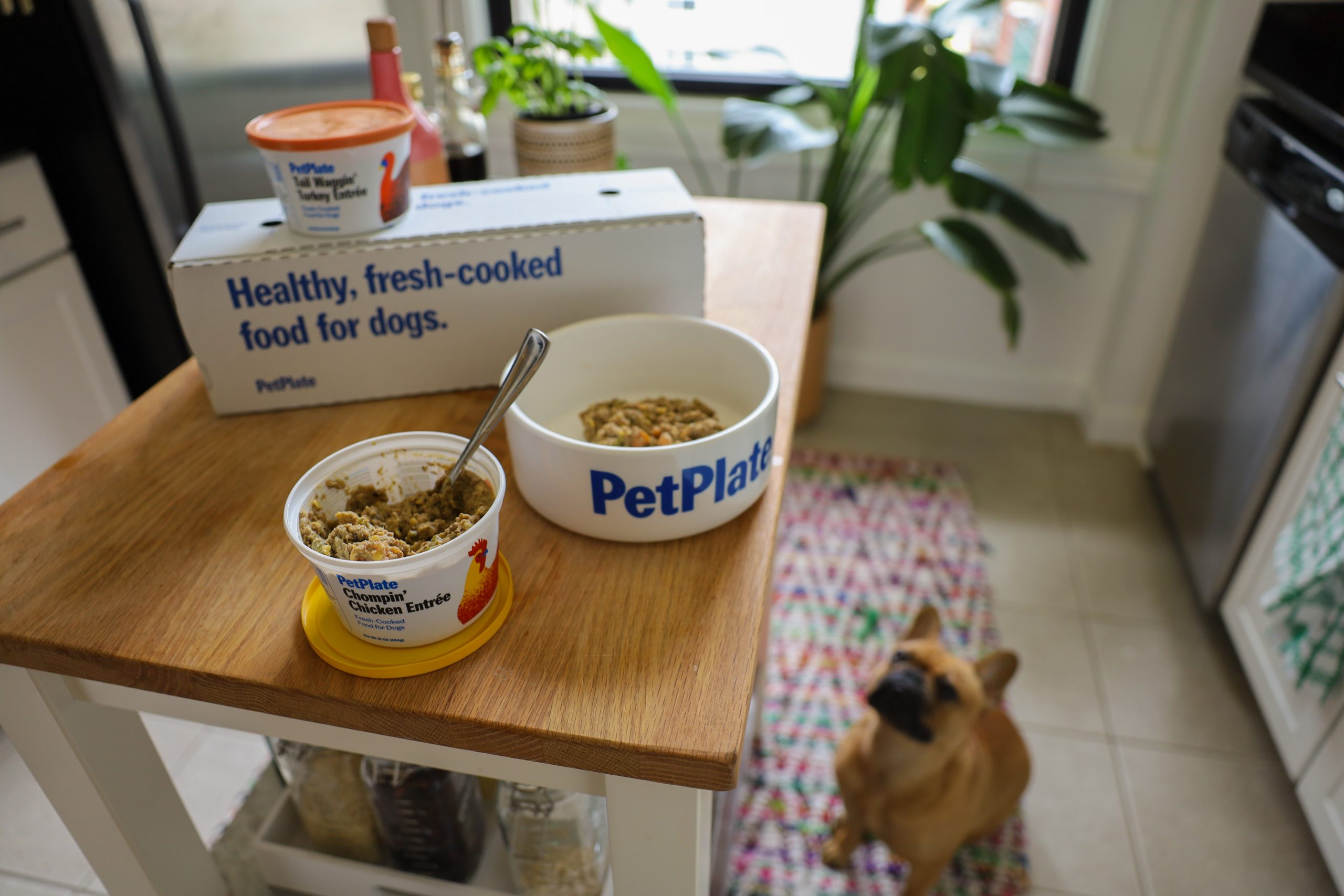
Feeding your dog a high-quality diet is a good, easy way to prevent bad gas. A healthy diet of gastrointestinal low-fat dog food reduces the chance that your pup will get gas.
PetPlate’s mission is to keep your dog’s tummy healthy and happy. We make it easy by delivering customizable meals that are delicious and nutritious right to your door. Learn more about PetPlate’s four meal options and our Clean Bowl Guarantee!